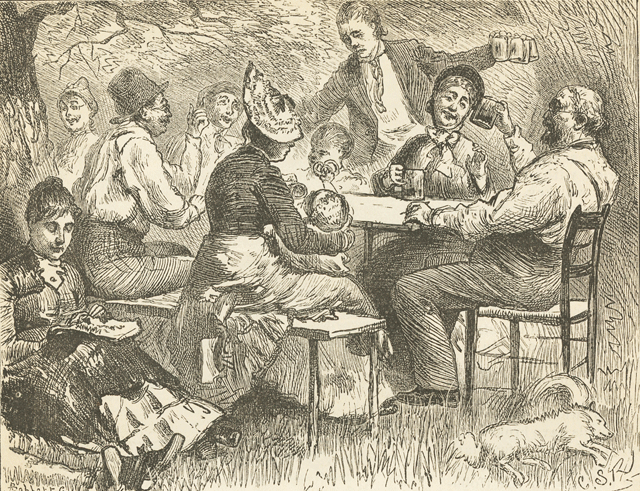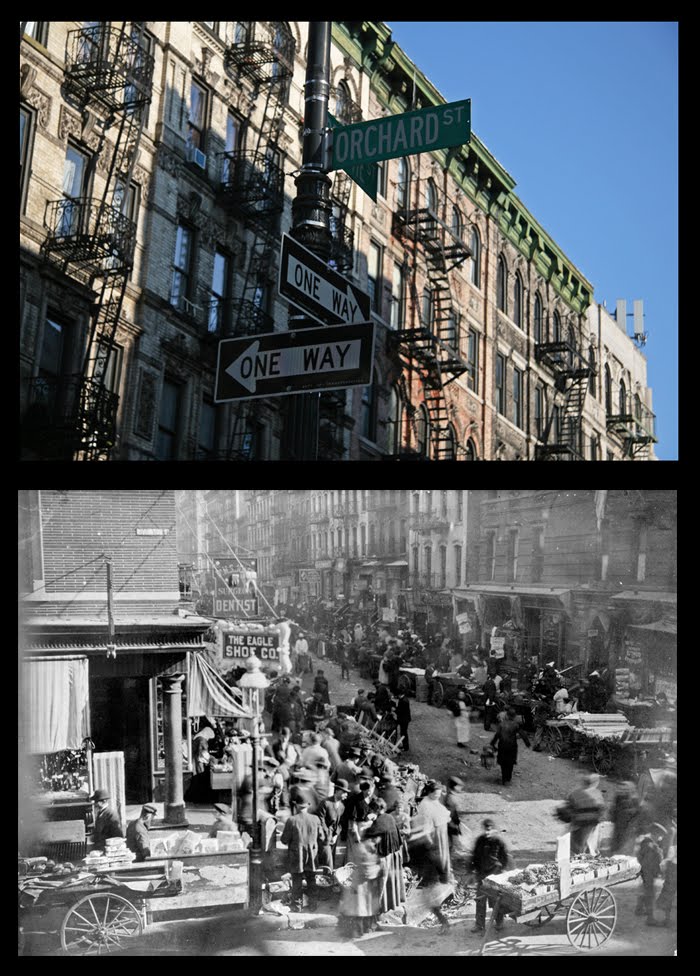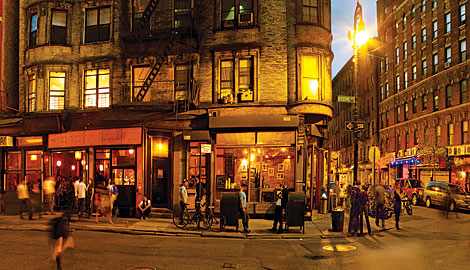What does History have to do with food?
It’s simple! The foods of the Lower East Side tell the stories of who lived here– even when those people are long gone– the tradition lives on our taste buds!
How is that delicious bialy? Oh you mean the bagel’s predecessor who was first baked by Jews from Bialystok, Poland? Or how about going out for a giant dish of handmade spaghetti in Little Italy? The place where many Italians lived and made their way in New York.
And why are there so many bars around here? Maybe it’s because this is an up and coming neighborhood with an exciting nightlife…we like to think it is a continuation of a tradition set long ago by the German biergartens and the Irish pubs. We can’t be certain but that lager beer you may have just washed down (if your over 21 of course) definitely is!
So sit back, learn a little history, and enjoy…
The First Great Wave
This wave of immigration took place between the 1820s and the 1880s. Most of the immigrants were from Ireland and Germany. The Irish were fleeing from the devastating effects of the potato famine while the Germans were escaping political unrest in the German states.
The Irish:
Many of the Irish who arrived in New York were very poor and unskilled. This led them to live in places like Five-Points, which is portrayed in the motion picture Gangs of New York . The Irish quickly found their place in society by participating in politics and establishing Tammany Hall.
The Germans:
The Germans established their own neighborhood Klein- Deutschland, or Little Germany. Here, biergartens (beer gardens) were established, where families sat and drank in a communal fashion. By the end of the 19th century, America’s largest breweries were located on the Lower East Side.

Beirgarten Illustration
_____________________
As these immigrants amassed wealth, they emigrated from the cramped condition of the Lower East Side and moved to places like Brooklyn, Long Island, and suburban areas. This made room for the next wave of immigrants to come to New York.
______________________________
The Second Wave
By the late 1880’s the Irish and German had already established themselves in the Lower East Side. The second wave of immigrants included Southern Italians, Jews from Poland and Russia, Greeks, Poles, Hungarians, Bohemians, and Chinese. However, Italians and European Jews made up the majority of newcomers.
The Italians:

Orchard Street
In the late 19th century, high levels of unemployment and poverty drove many Italians to America. The Southern Italians who came to New York were at a disadvantage because they came from an agrarian society. Many of the immigrants were young men who planned to return to Italy, however, many remained and had their families come over.
The Jews:
The Jews came to New York to escape the anti-Semitism back home. The majority of Jews had their origins in Russia. Unlike the Italians, many Jews came with advantageous skills, such as sewing. The Jews inhabited the old German quarters of the Lower East Side, creating many Yiddish theaters and synagogues. It was at this time that the Lower East Side became the most congested place in the world with over 700 people per acre.
_________________
What is the Lower East Side like today?
Apartments now have indoor plumbing! Many of the apartments are becoming home to many middle and upper-class New Yorkers. Many of the tenements where immigrants used to live have been knocked down and replaced with parking garages, highways, or newer housing. An old tenement has been converted into a muesum where tours of the neighborhood are given.


